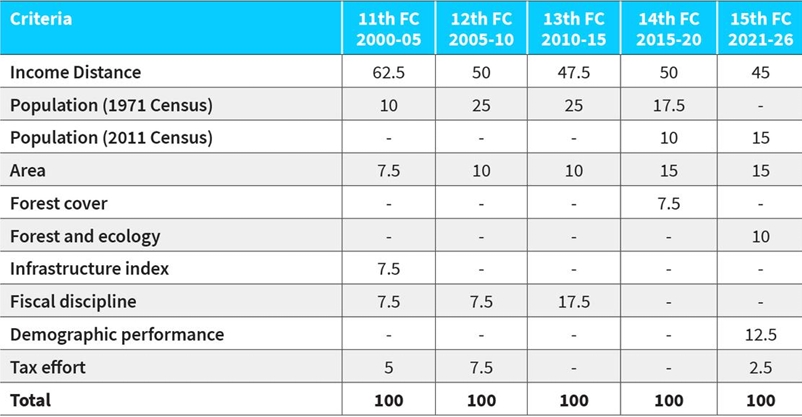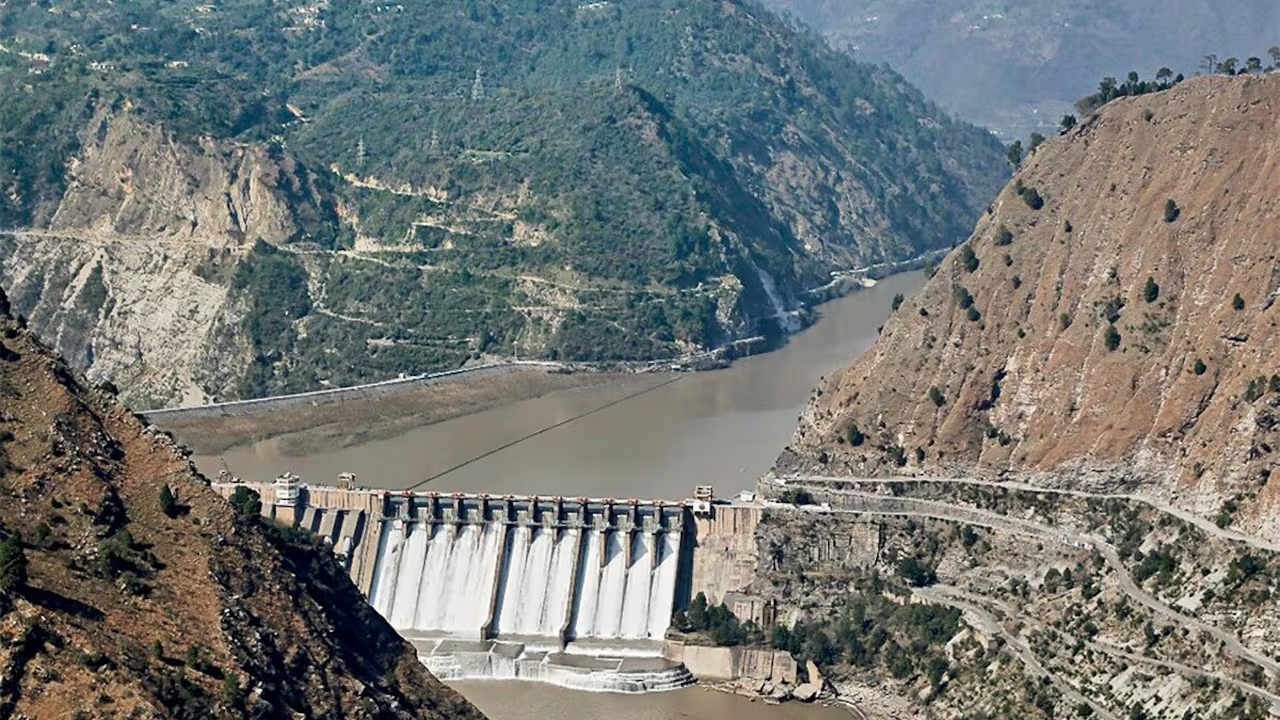- Courses
- GS Full Course 1 Year
- GS Full Course 2 Year
- GS Full Course 3 Year
- GS Full Course Till Selection
- Answer Alpha: Mains 2025 Mentorship
- MEP (Mains Enrichment Programme) Data, Facts
- Essay Target – 150+ Marks
- Online Program
- GS Recorded Course
- Polity
- Geography
- Economy
- Ancient, Medieval and Art & Culture AMAC
- Modern India, Post Independence & World History
- Environment
- Governance
- Science & Technology
- International Relations and Internal Security
- Disaster Management
- Ethics
- NCERT Current Affairs
- Indian Society and Social Issue
- NCERT- Science and Technology
- NCERT - Geography
- NCERT - Ancient History
- NCERT- World History
- NCERT Modern History
- CSAT
- 5 LAYERED ARJUNA Mentorship
- Public Administration Optional
- ABOUT US
- OUR TOPPERS
- TEST SERIES
- FREE STUDY MATERIAL
- VIDEOS
- CONTACT US
Centre-State Financial Devolution
Centre-State Financial Devolution

Context
Recent reports from indicate that the Union Government is proposing a reduction in the States’ share of the divisible pool of taxes from the current 41% to 40%. This change, may reduce States’ annual revenue by approximately ₹350 billion (₹35,000 crore).
Introduction
Fiscal federalism in India determines the financial relationship between the Union and State governments. The Indian Constitution lays down the framework for tax collection and revenue distribution, ensuring that financial resources are allocated equitably. However, there are frequent disputes between the Centre and States regarding fund allocation, revenue-sharing mechanisms, and tax devolution, particularly in light of GST implementation and cess and surcharge levies by the Centre.
Constitutional Provisions Governing Fiscal Federalism
The Indian Constitution provides a structured framework for revenue-sharing between the Centre and States:
1. Articles Governing Tax Distribution
|
Article |
Provision |
|
Article 268 |
Duties levied by the Centre but collected and appropriated by the States (e.g., stamp duty). |
|
Article 269 |
Taxes levied and collected by the Centre but assigned to the States (e.g., inter-state trade taxes). |
|
Article 270 |
Distribution of taxes between the Centre and States (e.g., Income Tax, GST). |
|
Article 271 |
States do not receive a share of surcharges and cesses levied by the Centre. |
|
Article 275 |
Provides grants-in-aid from the Centre to certain States. |
|
Article 280 |
Mandates the appointment of a Finance Commission every five years to recommend the distribution of tax revenues. |
2. Seventh Schedule: Division of Taxation Powers
|
List |
Taxation Power |
|
Union List |
Taxes levied exclusively by the Centre (e.g., Income Tax, GST on inter-state trade, Customs Duties). |
|
State List |
Taxes under the jurisdiction of the State (e.g., State Excise, Stamp Duty, Land Revenue). |
|
Concurrent List |
Laws made by both Centre and States, but taxation power rests mainly with the Centre. |
The Role of Finance Commissions: 15th and 16th
Finance Commission
- The Finance Commission (FC) is a constitutional body that decides how tax revenues should be shared between the Union and States.
- Every 5 years President appoints the FC on the recommendation of the Centre, but it is an independent body.
- It consists of a chairman and four other members who are appointed by the President.
- The Finance Commission (Miscellaneous Provisions) Act, 1951, has specified the qualifications for chairman and other members of the commission.
- The Union government has notified the constitution of the 16th Finance Commission under the chairmanship of Dr. Arvind Panagariya for making its recommendations for the period of 2026-31.
15th Finance Commission (2020–2025)
|
Key Features |
Details |
|
Chairperson |
N.K. Singh |
|
Vertical Devolution |
States receive 41% of the divisible pool (a reduction from 42% after J&K’s reorganization). |
|
Horizontal Devolution Criteria |
Population (2011 Census - 15%), Income Distance (45%), Area (15%), Forest & Ecology (10%), Tax Effort (2.5%), Demographic Performance (12.5%). |
|
Special Grants |
Specific grants for health, education, and disaster risk management. |
16th Finance Commission (2026–2031)
- Chairperson: Dr. Arvind Panagariya
- Mandate:
- Review tax devolution, particularly proposals to reduce States' share to 40%.
- Evaluate grants-in-aid to States and local bodies.
- Recommend funding mechanisms for disaster relief.
Binding Recommendations:
- The Finance Commission’s recommendations are binding, meaning that once implemented, they cannot be changed arbitrarily by the Union Government.
Horizontal Devolution: Criteria for Tax Distribution Among States
Successive Finance Commissions have modified the formula for horizontal devolution to better reflect fiscal realities. The following table provides an overview of the evolution of criteria:

For 15th FC
Income distance: distance of a State’s income from the State with highest per capita income (States with lower per capita income -given a higher share to maintain equity among States.)
Population: population as per the 2011 Census
Forest and ecology: share of dense forest of each State
Tax effort: used to reward States with higher tax collection efficiency.
Sources of revenue for the centre and states
Centre’s Revenue Sources
- Direct Taxes:
- Income Tax
- Corporate Tax (not shared with States)
- Indirect Taxes:
- GST on inter-state trade (IGST)
- Customs Duties
- Excise Duties on Petroleum and Tobacco
- Non-Tax Revenues:
- PSU Profits
- Dividends from RBI and Public Sector Enterprises
- Spectrum Sales and Licensing Fees
States’ Revenue
- State GST (SGST)
- State Excise (Alcohol)
- Stamp Duty & Registration Fees
- Mining Royalties, Lotteries, and Land Revenue
Current Issues in Centre-State Financial Relations
Reduction in States’ Share
- Proposal: Cut tax devolution from 41% to 40%.
- Impact: Could lead to ₹350 billion revenue loss for States.
Rising Share of Cesses & Surcharges (Article 271)
- Non-Devolvable Revenue: Cesses and surcharges (around 23% of its gross tax receipts for 2024-25. )are fully retained by the Centre.
- Impact: The divisible pool shrinks, reducing States’ funds.
GST Compensation Issues
- Delayed Payments: Many States struggled to receive their due compensation after the GST compensation period ended in June 2022.
- Demand for Extension: Some States are calling for permanent GST revenue-sharing mechanisms.
Declining Share for Southern States
- Issue: Southern States (e.g., Tamil Nadu, Kerala, Karnataka) receive lesser allocations due to low population growth (2011 Census data).
- Impact: States that have controlled population growth are effectively penalized.
Variation in Grants-in-Aid Across States
- Grants-in-aid recommended by the Finance Commission (FC) differ across States based on specific fiscal needs. (E.g. Revenue Deficit Grants ,Sector-Specific Grants ,State-Specific Grants ,Local Body Grants )
15th Finance Commission – Other Recommendations
- States should allocate over 8% of their budgets to health by 2022.
- Two-thirds of total health expenditure should focus on primary healthcare.
- Recommended more flexibility in centrally sponsored health schemes, focusing on outcomes instead of inputs.
- Proposed the creation of an All India Medical and Health Service.
- Suggested setting up a non-lapsable fund for defence and internal security modernization.
- Advised a minimum funding threshold for Centrally Sponsored Schemes (CSS).
- Recommended phasing out CSS with limited impact.
- Proposed regular third-party reviews of CSS and stable, transparent funding patterns.
- Recommended ₹4,800 crore in grants from 2022–23 to 2025–26 to incentivize states to improve education outcomes.
- Suggested a ₹45,000 crore performance-based incentive for states implementing agricultural reforms.
Disparities in Tax Contributions and Returns
- Industrially developed States (e.g., Maharashtra, Tamil Nadu, Karnataka) receive significantly less in return compared to what they contribute in central taxes.
- Reasons:
- Income Distance Formula: Lower-income States receive higher devolution.
- Corporate Taxation Structure: Taxes are remitted in State capitals where companies are headquartered, skewing revenue distribution.
Way Forward
1. Expanding the Divisible Pool
- Include a portion of cesses & surcharges to provide a larger share to States.
2. Enhancing State Fiscal Autonomy
- Allow greater taxation power for States on new revenue streams.
3. Reforming Devolution Criteria
- Increase weightage for fiscal effort and GST contributions.
4. Institutionalizing Intergovernmental Consultations
- Regular Centre-State fiscal dialogues through an Empowered Committee.
5. Addressing Regional Disparities
- Targeted Grants: Funding should reward efficient States while supporting lagging ones.
Conclusion
The Centre-State tax division is a pillar of India’s fiscal federalism. While the Finance Commissions ensure equitable revenue-sharing, challenges such as rising cess collections, GST compensation delays, and declining State autonomy persist.
To maintain economic stability, India must modernize its tax-sharing model to promote fiscal autonomy, transparency, and balanced regional development.




